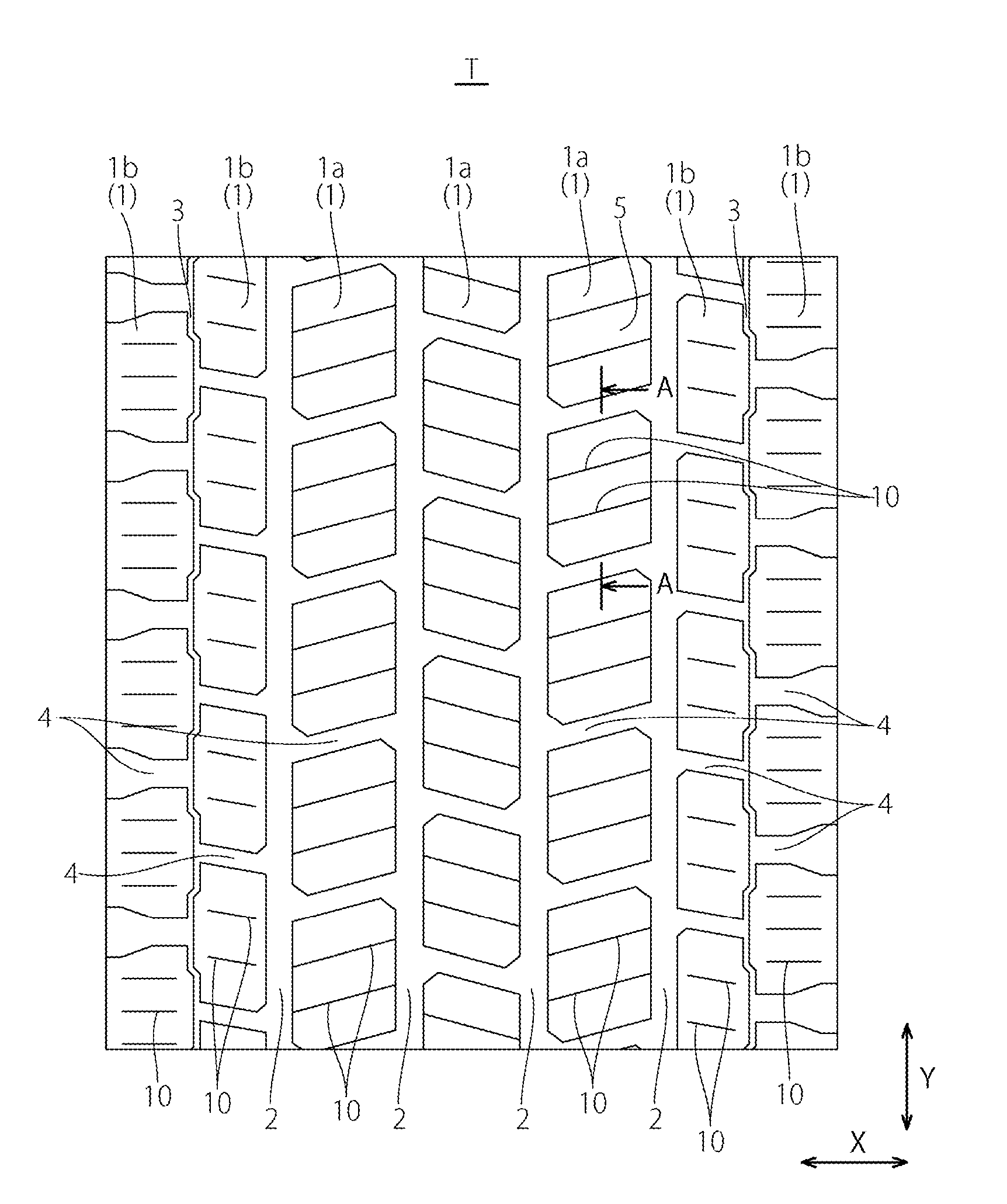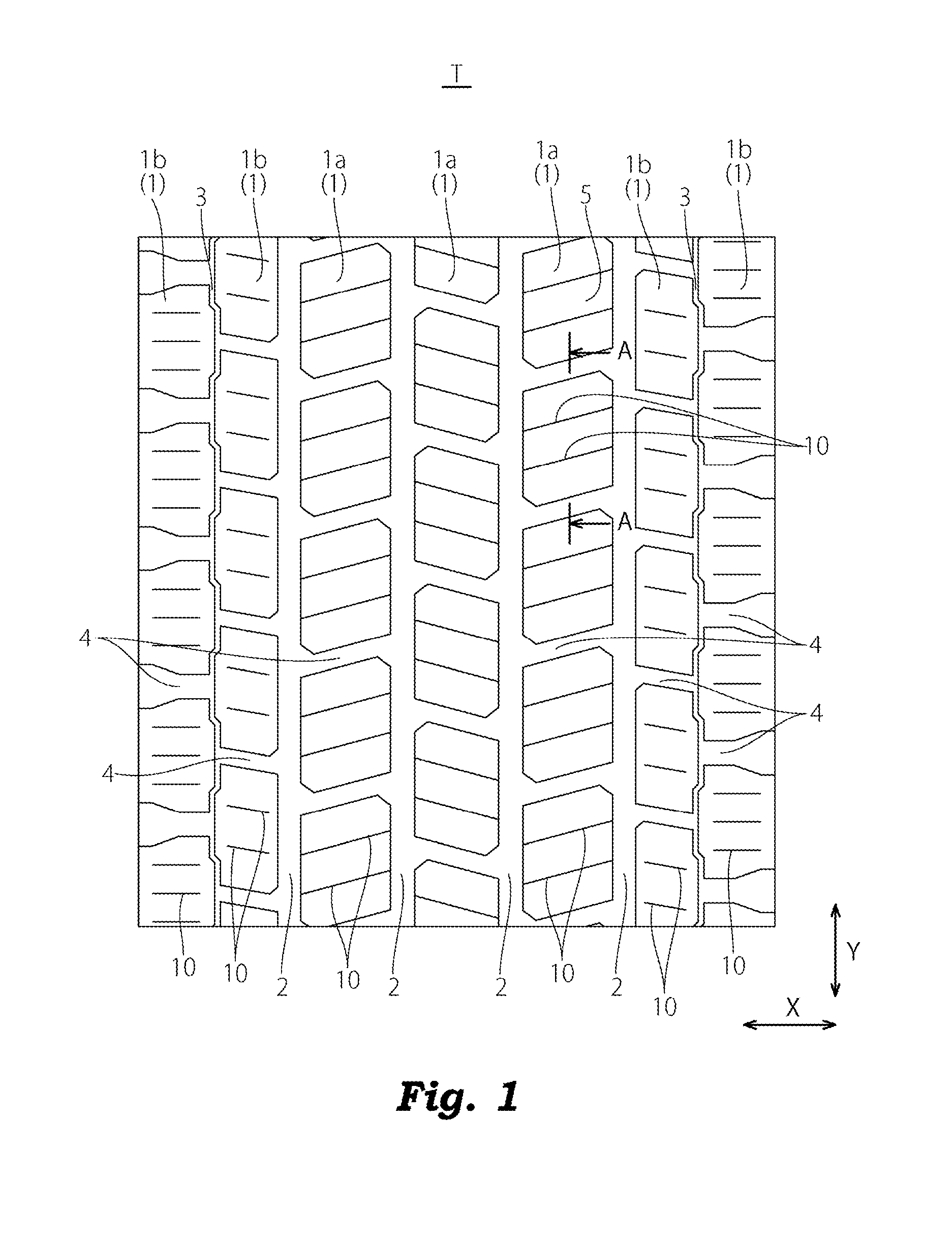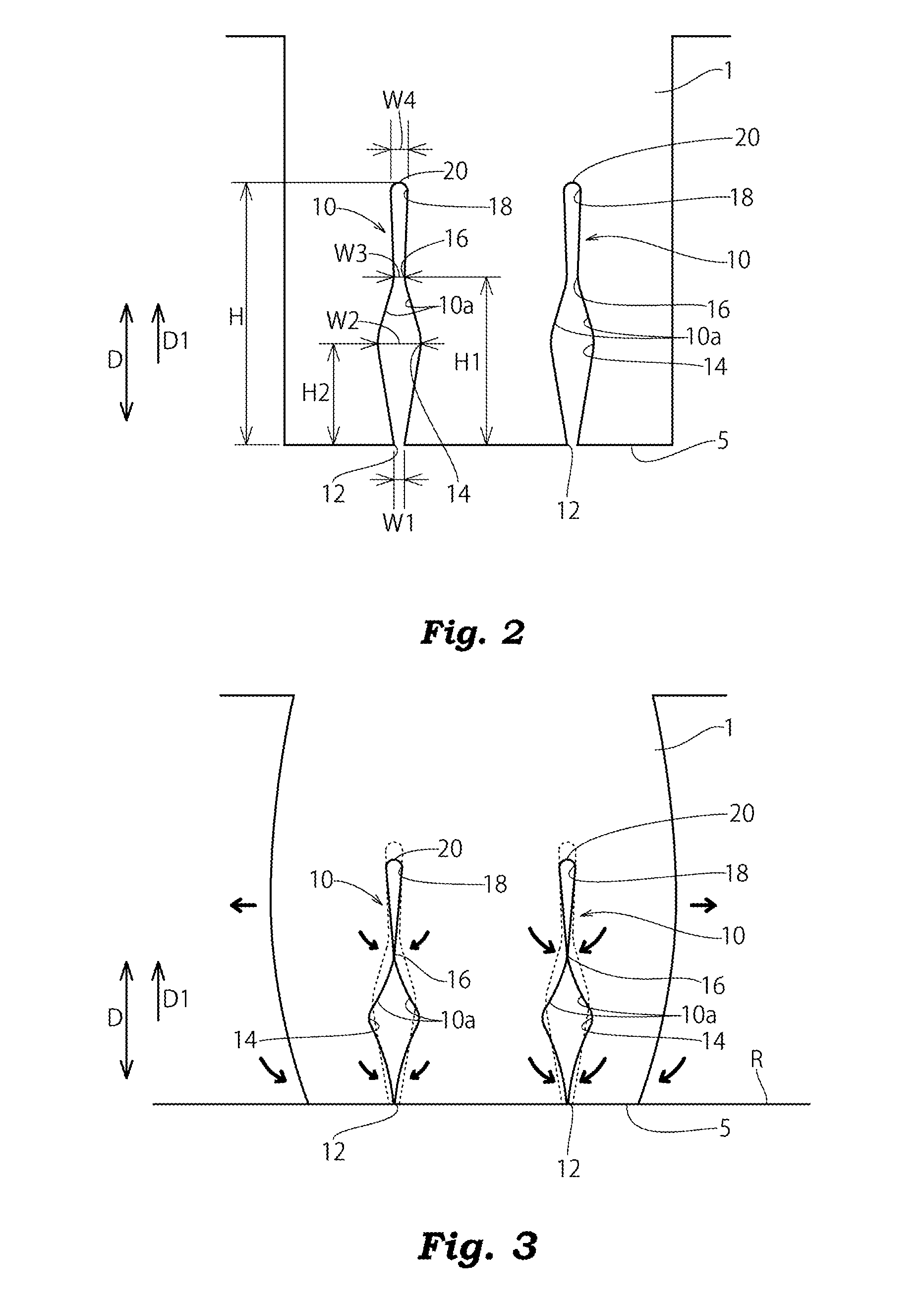Pneumatic tire
a technology of pneumatic tires and tires, applied in the field of pneumatic tires, can solve the problems of lowering the rigidity excessive falling of the land portion, and lowering the braking performance of the tire on the icy road surface, and achieve the effect of grooving
- Summary
- Abstract
- Description
- Claims
- Application Information
AI Technical Summary
Benefits of technology
Problems solved by technology
Method used
Image
Examples
example 1
[0041]In the example 1, the sipe 10 having the cross-sectional shape shown in FIG. 2 was formed on all blocks in the tread pattern T shown in FIG. 1. The respective sizes such as the depth H of the sipe 10, the length H1 in the sipe depth direction D from the opening end 12 to the neck portion 16, the length H2 in the sipe depth direction D from the opening end 12 to the first large width portion 14, the width W1 of the opening end 12 of the sipe 10, the groove width W2 of the first large width portion 14, the groove width W3 of the neck portion 16, and the groove width W4 of the second large width portion 18 are shown in Table 1.
PUM
 Login to View More
Login to View More Abstract
Description
Claims
Application Information
 Login to View More
Login to View More - R&D
- Intellectual Property
- Life Sciences
- Materials
- Tech Scout
- Unparalleled Data Quality
- Higher Quality Content
- 60% Fewer Hallucinations
Browse by: Latest US Patents, China's latest patents, Technical Efficacy Thesaurus, Application Domain, Technology Topic, Popular Technical Reports.
© 2025 PatSnap. All rights reserved.Legal|Privacy policy|Modern Slavery Act Transparency Statement|Sitemap|About US| Contact US: help@patsnap.com



